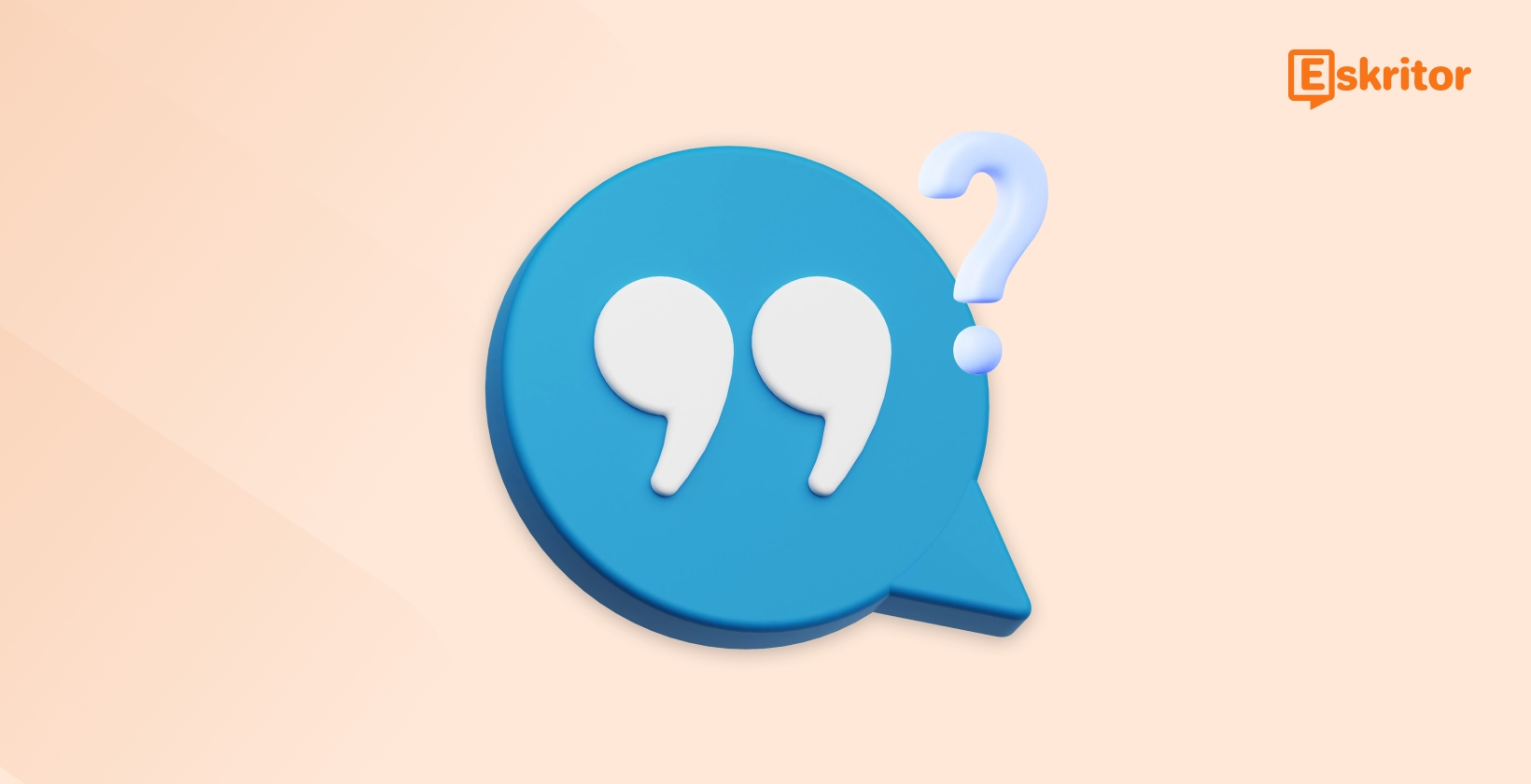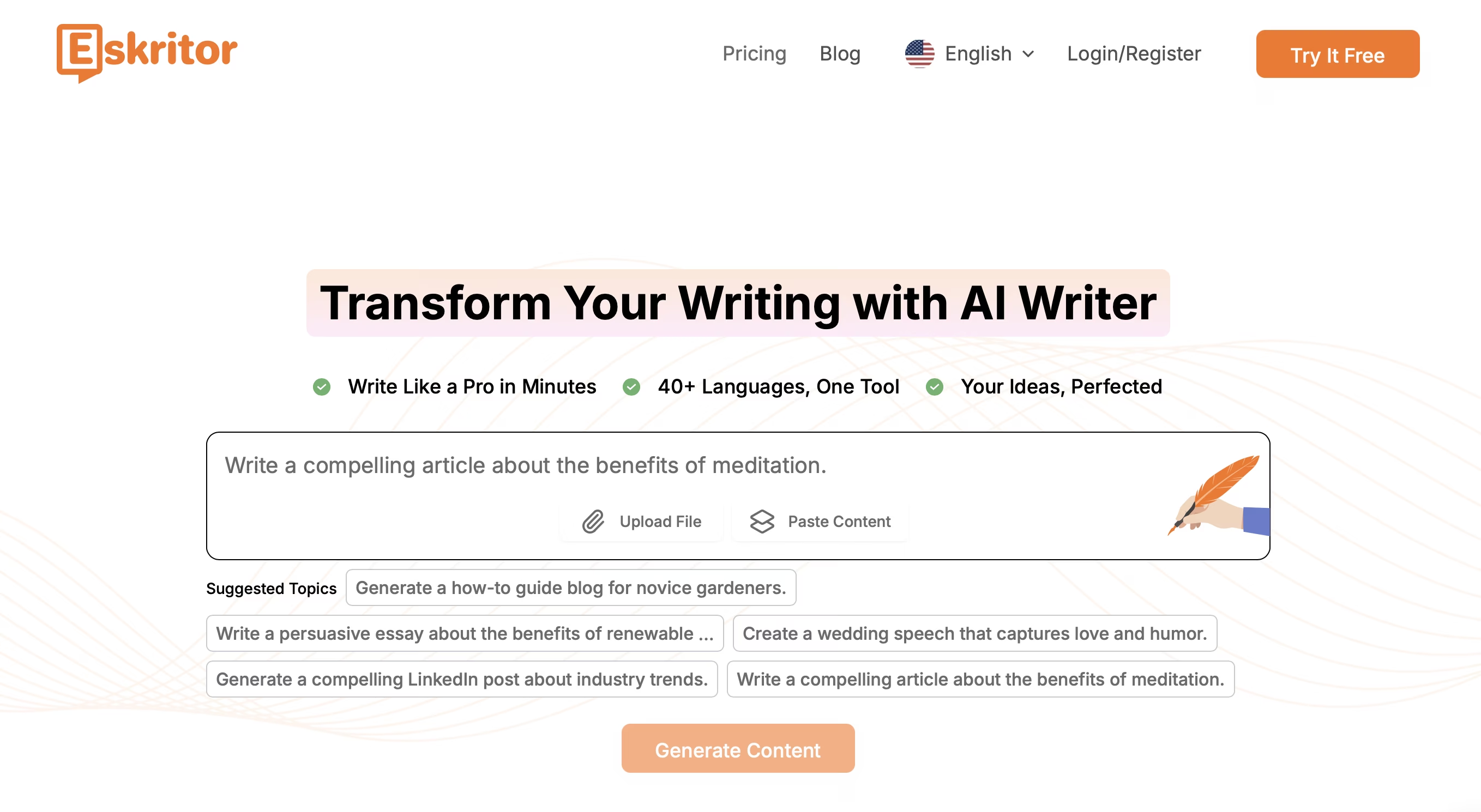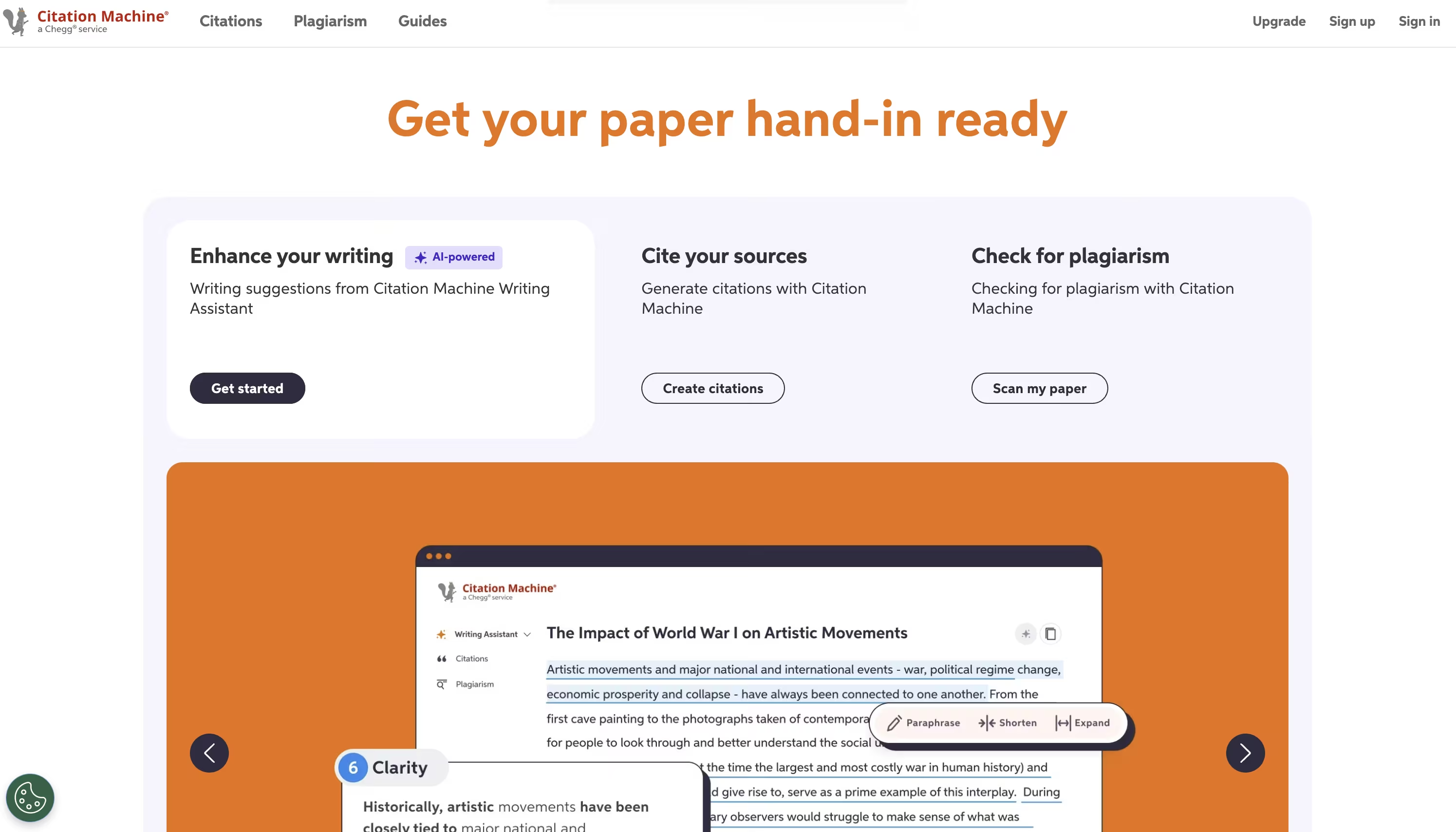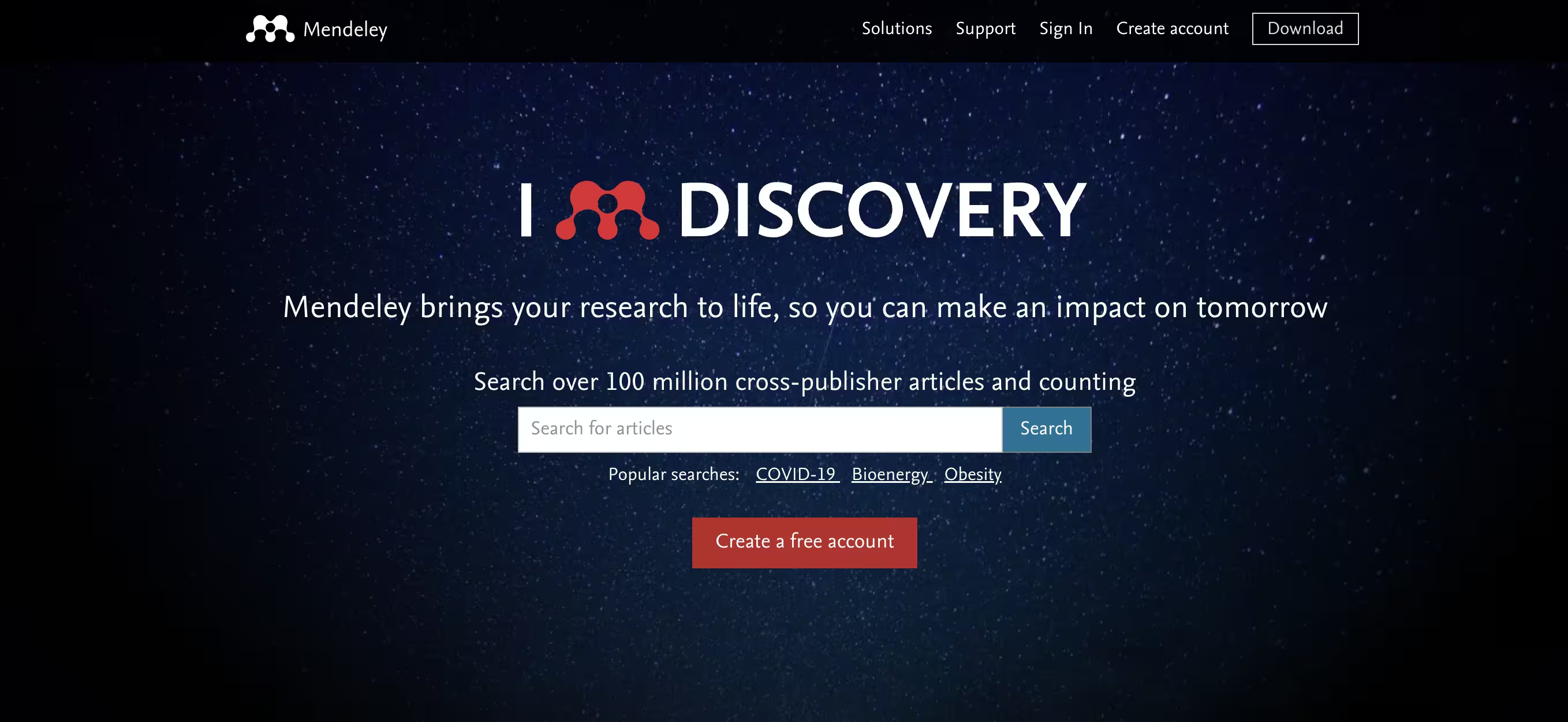
What is Citation in Academic Writing? Examples & Styles
Generate the Best Content with AI in Seconds
Generate the Best Content with AI in Seconds
Citation in academic writing forms the foundation of scholarly communication and research validation. Citations serve as formal references to sources consulted during research, creating a scholarly trail that allows readers to verify information and acknowledge the original authors, particularly in cases of paraphrase in text citation. Understanding what citation is becomes essential for students, researchers, and professionals who need to maintain academic integrity in their written work.
Whether you're writing a research paper that requires APA citation format or an essay needing MLA citation style, including when you need to paraphrase MLA, this comprehensive guide covers all aspects of citation practices for academic success.
What is a Citation in Academic Writing?
Citation is a formal reference to a source used in your writing, helping attribute ideas and avoid plagiarism, especially when you need to paraphrase in APA. Citations function as an academic trail of breadcrumbs, allowing readers to trace your research journey and verify the facts, ideas, or arguments you've incorporated into your work.
Citations typically include specific elements that help readers locate the original source:
- Author names
- Title of the work
- Publication date
- Publisher information
- Page numbers (if applicable)
- DOI (Digital Object Identifier) or URL for online sources
The practice of citing dates back centuries in scholarly tradition, evolving from simple references in ancient texts to the standardized citation systems of today. What began as occasional mentions of influential thinkers has developed into rigorous citation methodologies that maintain academic integrity across disciplines and ensure proper attribution of intellectual property.
Why Are Citations Important for Academic Integrity?
Academic citations form the foundation of scholarly communication and research validation. When properly formatted and consistently applied, these academic citations ensure that intellectual contributions are acknowledged, sources can be verified, and scholarly conversations can continue across publications and time periods.

Proper citations demonstrate academic integrity and respect for intellectual property by:
- Preventing plagiarism : Citations clearly distinguish between your original ideas and those borrowed from others, protecting you from accusations of intellectual theft.
- Building credibility : Well-cited work shows thorough research and scholarly diligence, enhancing your reputation as a careful, ethical researcher.
- Supporting arguments : Citations provide evidence backing your claims, strengthening your position, and demonstrating that your ideas are built on solid research.
- Creating a research trail : Citations create a map of knowledge that others can follow, facilitating further research and scholarly conversation.
- Meeting academic standards : Most educational institutions and publications have strict citation requirements that must be met for work to be accepted.
Why citations are important extends beyond these practical benefits. Citations also contribute to the broader academic ecosystem by acknowledging the collaborative nature of knowledge creation. Each citation recognizes the contributions of other scholars and places your work within the ongoing conversation of your field.
What Are the Different Citation Styles?
Learning the different citation formats is crucial for academic success. Each discipline typically follows specific citation formats that have evolved to meet the particular needs of that field, with variations in how information is ordered, punctuated, and emphasized. A citation styles comparison reveals important differences between major systems like APA, MLA, and Chicago.
Before exploring each in depth, here’s a quick overview of the most widely used academic citation styles:
- APA Style : Common in psychology, education, social sciences, and business writing
- MLA Style : Frequently used in the humanities, especially in literature, arts, and language studies
- Chicago Style : Offers both notes-bibliography and author-date systems; used in history, humanities, and social sciences
- Harvard Style : Popular in academic writing in the UK and Australia; similar to APA with author-date format
- IEEE Style : Standard for technical writing, engineering papers, and computer science research
- Vancouver Style : Common in biomedical and health sciences with numbered referencing
- AMA Style : Used in medical, clinical, and pharmaceutical research with superscript citations
- Bluebook Style : The legal citation system used in law journals, court documents, and legal research papers
APA Citation Style Overview
The American Psychological Association (APA) style is widely used in the social sciences, education, and business fields.
Key characteristics of APA style include:
- Author-date in-text citations (Smith, 2020)
- Reference list alphabetized by author's last name
- Emphasis on publication dates
- Specific formatting for different source types
- Title case for journal titles, sentence case for article titles
Example: Smith, J. (2020). Understanding citation practices in academic writing . Academic Press.
MLA Citation Style Overview
The Modern Language Association (MLA) style is commonly used in the humanities, especially in literature, arts, and language studies.
Key characteristics of MLA style include:
- Author-page in-text citations (Smith 42)
- Works Cited list alphabetized by author's last name
- Less emphasis on publication dates
- Italicized titles for longer works, quotation marks for shorter works
- Title case for all source titles
Example: Smith, Jane. Understanding Citation Practices in Academic Writing . Academic Press, 2020.
Chicago Citation Style Overview
The Chicago Manual of Style offers two documentation systems: notes-bibliography (common in humanities) and author-date (similar to APA, used in sciences and social sciences).
Key characteristics of the Chicago style include:
- Flexibility with either footnotes/endnotes or in-text citations
- Comprehensive bibliography or reference list
- More detailed publication information
- Special provisions for unusual source types
- Title case for titles
Example: Smith, Jane. Understanding Citation Practices in Academic Writing . Chicago: Academic Press, 2020.
Other Important Citation Styles
While APA, MLA, and Chicago are the most common styles, several other important citation formats exist:
- Harvard style : Similar to APA with author-date citations but with slight formatting differences
- IEEE style : Used in technical fields with numerical in-text citations
- Vancouver style : Common in medical sciences with sequentially numbered references
- AMA style : Standard for medical research with superscript numbers for citations
- Bluebook : The standard citation system for legal documents and research
How to Choose the Right Citation Style?
Selecting the appropriate citation style depends on several factors:
- Academic discipline : Follow the conventional style for your field (e.g., APA for psychology)
- Instructor requirements : Always prioritize specific guidelines provided by your professor
- Publication guidelines : When submitting to journals, adhere to their specified style
- Consistency : Once you choose a style, maintain it throughout your document
- Source complexity : Consider which style best accommodates your unique sources
When in doubt, consult your institution's writing center or style guides for clarification. Tools like Eskritor can automatically format citations in multiple styles, eliminating guesswork and ensuring consistency throughout your document, especially when you use rewording tool.
How to Cite Sources Correctly in Academic Papers?
When it comes to creating effective academic citations, understanding how to cite sources correctly is essential for scholarly writing. Different documentation systems provide specific guidelines that must be followed precisely to ensure your references are properly formatted and complete.
What are the Basic Citation Components?
Most citations, regardless of style, include these fundamental elements:
- Author information : Full names of all authors, editors, or organizational authors
- Title information : Titles of books, articles, websites, or other sources
- Publication details : Publisher name, publication date, volume/issue numbers
- Location information : Page numbers, URLs, DOIs, or physical location for rare materials
- Medium or format : Indication of whether the source is print, web, film, etc.
The specific arrangement of these components and punctuation used will vary by citation style, but gathering this information for each source is the essential first step.
What Are the Guidelines for In-text Citations?
The field of in-text citation has its own specific rules that vary according to the style guide and can greatly benefit from sentence expansion strategies. When incorporating in-text citations into your writing, you'll need to know whether your chosen style uses parenthetical citations, footnotes, or endnotes, and how to format them properly.
- APA in-text citations include the author's last name and year: (Smith, 2020)
- MLA in-text citations include the author's last name and page number: (Smith 42)
- Chicago author-date includes the author's last name and year: (Smith 2020)
- Chicago notes-bibliography uses numbered footnotes or endnotes
When incorporating in-text citations, consider these practices:
- Place citations immediately after quoted or paraphrased material
- For direct quotes, include page numbers in all styles
- For sources with multiple authors, follow style-specific guidelines for listing names
- For sources without authors, use shortened titles or organizational authors
How to Create Reference Lists and Bibliographies?
End-of-document citations provide complete source information:
- APA uses "References"
- MLA uses "Works Cited"
- Chicago notes-bibliography uses "Bibliography"
- Chicago author-date uses "References"
Best practices for creating reference lists include:
- Alphabetize entries by author's last name (or title if no author is available)
- Use hanging indentation for multi-line entries (first line flush left, subsequent lines indented)
- Double-space consistently throughout (unless otherwise specified)
- Include all sources cited in your text (and only those sources)
- Follow style-specific formatting for each entry type
Citation Examples for Different Source Types
Looking at citation examples can help clarify how abstract rules should be applied in practice. When examining citation examples for books, articles, websites, and other sources, pay attention to punctuation, italicization, and the order of elements.
- Book : Author, A. A. (Year). Title of book . Publisher.
- Journal article : Author, A. A. (Year). Title of article. Journal Name, Volume (Issue), page range. DOI or URL
- Website : Author, A. A. (Year, Month Day). Title of page. Site Name. URL
- YouTube video : Creator, C. C. [Username]. (Year, Month, Day). Title of video [Video]. YouTube. URL
- Government document : Agency Name. (Year). Title of document (Report No. 123). Publisher.
Smart citation tools like Eskritor can automatically format citations for virtually any source type according to multiple style guides, ensuring accuracy and saving valuable time during the writing process.
What Are the Best Citation Tools?
Students and researchers have access to numerous citation tools and software that can dramatically simplify the citation process. Citation tools and software range from simple generators to comprehensive management systems, with options available for every level of need, from basic papers to complex research projects.
Several categories of citation tools serve different needs, ranging from simple generators to comprehensive management systems. The variety of available tools reflects the diverse requirements of different writers, from students working on occasional papers to researchers managing hundreds of sources.
- Web-based citation generators : Simple online tools that create individual citations
- Reference management software : Comprehensive programs for organizing research sources
- Bibliography add-ons : Extensions for word processors that integrate citation capabilities
- AI-powered writing assistants : Sophisticated tools that combine citation management with other writing support
- Mobile citation apps : Portable solutions for creating citations on smartphones or tablets
Let's explore some of the most popular citation tools available today:
Eskritor
Eskritor takes a comprehensive approach to writing assistance, with citation management as one component of its AI-powered platform. It addresses the entire writing workflow rather than just citation creation.

Key features include:
- Multi-language support for citations in 40+ languages
- Custom citation prompts for specialized requirements
- Selective editing capabilities for targeted formatting changes
- AI-powered citation enhancement and verification
- Seamless format conversion between citation styles
- Integration with the broader writing process
Eskritor transforms the citation workflow in several ways:
- Automated formatting : Applying correct citation style without manual adjustment
- Contextual integration : Helping incorporate citations naturally within your text
- Error prevention : Flagging potential citation issues before submission
- Time savings : Reducing the hours spent on citation management
By integrating citation management with broader writing assistance, Eskritor provides a comprehensive solution that addresses the entire academic writing citation process rather than just citation creation, making it ideal for writers who want an all-in-one writing and citation solution.
Grammarly
Grammarly is primarily known as a grammar and spell-checking tool, but it also offers limited citation capabilities. While not a dedicated citation manager, it can help ensure your citations are grammatically correct and consistently formatted.

Grammarly works best for writers who need occasional citation help alongside general writing assistance, but it lacks the comprehensive citation management features of dedicated tools. Its basic citation format checking and style consistency checks can be useful for simple papers, though you'll likely need additional tools for more complex citation needs.
Citation Machine
Citation Machine offers a straightforward approach to citation generation. This web-based tool creates individual citations that you can then copy and paste into your document. With support for multiple citation styles, including APA, MLA, and Chicago, Citation Machine provides a simple interface with fill-in-the-blank citation creation.

It's ideal for students who need to create citations for occasional papers, but it doesn't offer robust organization features for managing large research projects or complex bibliographies.
Zotero
Zotero is a powerful open-source reference manager popular among serious researchers and academics. It provides comprehensive citation management alongside research organization features. With its browser extension for one-click saving of sources and automatic metadata extraction from PDFs, Zotero streamlines the research collection process.

It also offers collaboration tools for research teams and integrates with popular word processors. Zotero excels for researchers managing extensive bibliographies and working collaboratively on research projects, especially when affordability is a consideration.
Mendeley
Mendeley combines reference management with academic social networking features, creating a platform for both organizing research and connecting with other scholars. Its PDF annotation and note-taking capabilities help researchers engage deeply with their sources, while reference library sharing facilitates collaboration. The academic social network component allows users to discover relevant research and connect with colleagues in their field. Mendeley is particularly useful for researchers who want to combine citation management with networking and discovery of new research in their field.

Conclusion
Proper citation is a fundamental skill for academic and professional success, demonstrating your credibility as a writer while acknowledging the contributions of others to your work. By understanding citation basics, mastering different styles, and avoiding common mistakes, you can ensure your writing meets the highest standards of academic integrity.
As citation requirements continue to evolve with new source types and changing academic standards, tools like Eskritor offer valuable support for writers at all levels. Start using Eskritor today to transform your approach to citations and elevate the quality of your academic writing.
Frequently Asked Questions
Choose your citation style based on your academic discipline (e.g., APA for social sciences, MLA for humanities), instructor requirements, publication guidelines, and the types of sources you're citing. When in doubt, ask your professor or advisor for guidance.
APA uses author-date in-text citations and emphasizes publication dates; MLA uses author-page citations and emphasizes author names; Chicago offers two systems: notes-bibliography (with footnotes/endnotes) and author-date (similar to APA). Each style also has specific formatting requirements for reference lists.
The best tool for generating citations automatically is Eskritor. It helps you create accurate in-text citations and reference lists in APA, MLA, Chicago, and other major styles. With just a few clicks, Eskritor formats your sources correctly, saving time and reducing errors in academic writing.
To create correct in-text citations, place them immediately after quoted or paraphrased material, include page numbers for direct quotes, follow style-specific guidelines for multiple authors, and ensure they correspond to entries in your reference list. The format varies by citation style (APA, MLA, Chicago, etc.).
Yes, you can cite AI-generated content if your institution or publisher allows it. Citation styles like APA and MLA have updated guidelines for referencing AI tools, usually listing the tool name, date, prompt, and source link (if applicable).





 location
location